Back in 1994, Lillehammer represented Norway on the global stage as the small mountain town invited the world to visit. Here's how the Winter Games panned out.
42 years after Norway first welcomed visitors to enjoy the world’s biggest winter sports event, the country took the opportunity to invite everybody back.
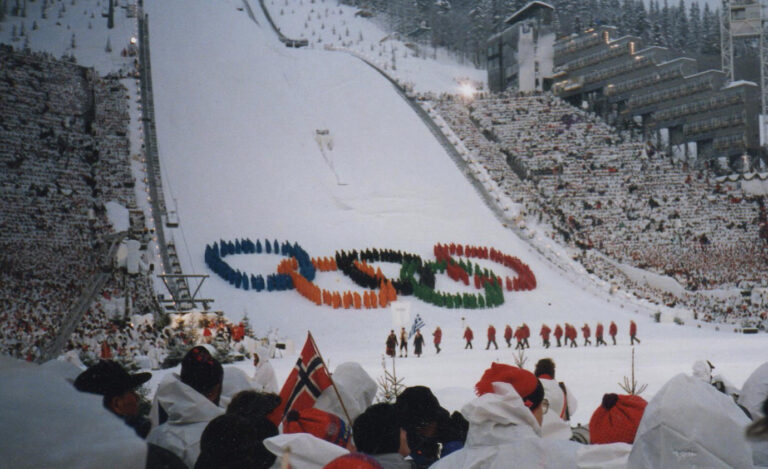
Playing an important role in boosting morale in the post-war years, the 1952 Winter Games in Oslo were deemed a success.
To say the event had changed between then and the Lillehammer Games would be an understatement. With almost treble the number of athletes and sports, awarding more than double the number of medals, the Winter Olympics had certainly grown.
Perhaps the biggest difference was the growth in media. As well as more spectators, the town would have to pay host to a global media village to beam live video, in real time, all around the world.
Would a small town, and not even a resort as people would know it, be able to handle this massive influx of people? Of course!
The games were, in fact, so successful and remembered even today as the most efficient games ever and, to some at least, not just the best winter games but the best games of any Olympics.
Lillehammer: Size isn't everything
Contrary to popular belief, Lillehammer isn’t the smallest place ever to host a Winter Olympics.
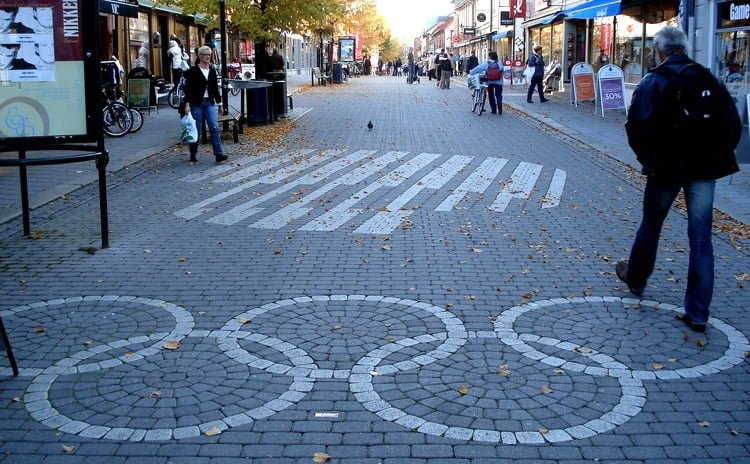
That dubious honour goes to Olympic Valley in California, close to Lake Tahoe. With a regular population of around 825, swelling to around 6,500 at the height of ski season, that’s never likely to be beaten!
Other small places have hosted it too, such as Lake Placid and St Moritz. But one thing they have in common is that they’re tiny places close to huge places.
Lake Placid is close to both New York City and Montreal while St Moritz, one of the biggest names in winter sports resorts, can be reached from Italy, Austria, and Germany with ease.
Like other resorts to host such as Albertville, it lies within a huge network of alpine resorts designed to scale up and down when needed. Obviously it's nice to have everyone staying locally but if you have major global cities within an hour that can massively help with infrastructure and logistics.
Lillehammer, on the other hand, is a small place in a country of small places! The country’s entire population is dwarfed by many of the world’s major metropolitan areas. Meanwhile Oslo, the capital, is smaller than most countries’ second, third and fourth biggest cities.
Yet the Lillehammer Winter Olympics of 1994 is fondly remembered by everyone involved and everyone who watched.
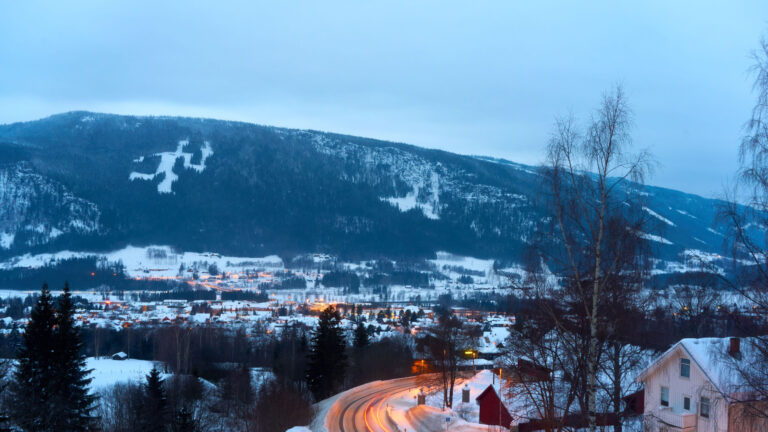
In fact, the small size is probably one of the keys to Lillehammer’s success in hosting what is fondly remembered as the perfect games.
It’s a well-known fact that as places get larger, the sense of community can diminish. Being a small place, Lillehammer was able to offer the kind of personal and friendly welcome that much larger places would struggle to provide.
Welcoming the world to Lillehammer
When the location was announced, I’m sure there were more than a few journalists, competitors and fans looking around for the nearest map of Europe!
While being well known in Norway as a place to visit for winter sports, that’s within easy reach of most of the major population areas, Lillehammer didn’t have the instant recognition of alpine resorts like St Moritz or Chamonix.
Still, the location of the 1994 Olympic Winter Games was chosen as Lillehammer and so all eyes turned to Norway to see if they could repeat their successful turn as host nation from over four decades before.
This was the first, and as yet only, Winter Olympics to take place two years after the previous one. The winter and summer games had previously been held in the same year but in the mid-80s, the International Olympic Committee voted to separate the two events into alternating even-numbered years.
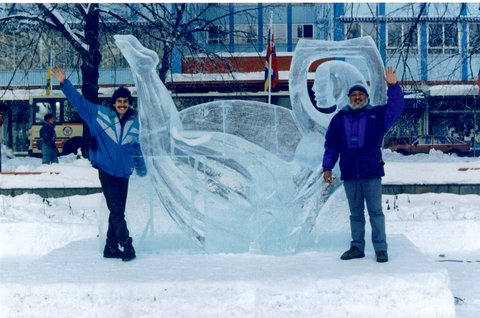
As is usually the case, the games started before the Opening Ceremony. Ice Hockey is generally the first sport to kick off to allow enough time to play all of the matches.
On the evening of February 12th, at Lysgårdsbakken, the arena surrounding the ski jump, the games were officially opened with the usual celebration.
All aspects of Norwegian life and culture were in the show, including traditional and Sámi folk dancing, Telemark skiing and aspects of Norse mythology. The ceremony was hosted by the actress Liv Ullmann and explorer Thor Heyerdahl.
King Harald V officially declared the games open and the Olympic Flame was actually skied down the ski jump before lighting the cauldron!
The athletes and events
A total of 1738 athletes representing 67 countries participated at the Games in 61 events across 12 disciplines of six sports – Bobsleigh, Ice Hockey, Figure Skating, Speed Skating, Alpine Skiing and Nordic Skiing.
The Games featured stronger qualifying criteria than previous years to prevent weaker teams from competing. This was mostly from warmer nations, so the African participation fell from 19 athletes in 1992 to just three in 1994.
These rules didn’t apply to Bobsleigh events so the Jamaican team made famous by the film Cool Runnings was able to take part, along with teams from the U.S. Virgin Islands and Trinidad and Tobago.
The former Soviet republics of Armenia, Belarus, Georgia, Kazakhstan, Kyrgyzstan, Moldova, Ukraine and Uzbekistan all participated as independent nations following the collapse of the Soviet Union.
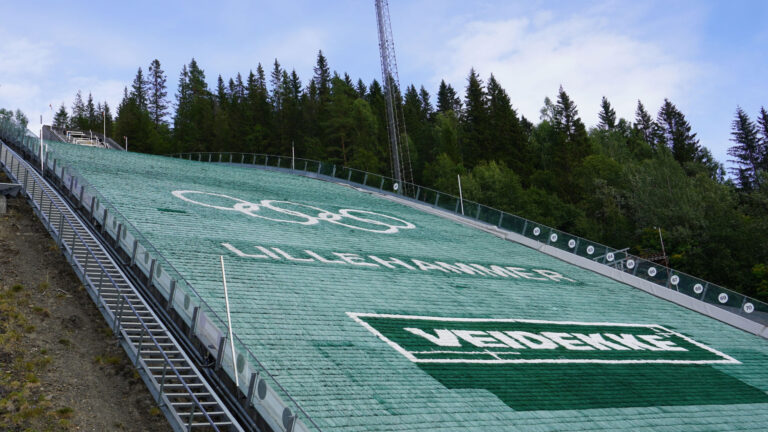
This was also the first time that Russia competed independently at the Winter Olympics, and the first time since 1912 that they competed as Russia at any Olympic Games.
Bobsleigh
Switzerland, Germany and Italy swept all six medals in the two-man and four-man bobsleigh events.
In the Luge events it was Italy, Germany and Austria who took all nine of the medals in Men’s Singles, Women’s Singles and Doubles events.
Ice Hockey
Twelve nations participated in 50 exciting games of fast paced ice hockey action. Norway failed to exit the group stage, along with Austria, Italy and France. Norway beat Austria in a play off to finish 11th, condemning Austria to the last place.
After the quarter finals, where the Czech Republic, United States, Germany and Slovakia were eliminated, the remaining four teams ready to battle out for the three medals were Canada, Finland, Sweden and Russia.
Canada beat Finland and Sweden beat Russia to set up a final between Sweden and Canada. In the playoff, Finland thrashed Russia 4-0 to take the 3rd medal spot.
In the final, Sweden tied the game with less than two minutes to go, forcing the game into overtime. The game was still tied at the end, and, in the shootout, Sweden’s keeper saved the 7th Canadian shot to secure gold for Sweden, relegating Canada, Olympic Ice Hockey’s record nine-times gold medal champions, to a silver medal.
Figure Skating controversy
Figure skating was mired in controversy before the games even started. Champion US figure skater Nancy Kerrigan had been attacked and hit on the knee with a club after a practice session just over a month before the games were due to start.

The attackers were known associates of her main rival Tonya Harding. The US Olympic Committee tried to ban Harding from the games but they relented under threat of legal action. All of this was huge global news at the time and served to make sure all eyes were on the Hamar Olympic Amphitheatre for the Ladies’ Singles.
In the end, gold was taken by neither American athlete as Ukraine’s Oksana Baiul won the country’s first even Olympic medal as a state in its own right following the breakup of the Soviet Union.
Kerrigan placed second to take the silver medal and bronze was taken by Chen Lu of China. Tonya Harding came in a very disappointing eighth place.
In the ice dance, a change to the rules allowed professionals to compete for the first time, seeing the return of former Olympic champions who had since turned professional. The gold medal was taken by Oksana Grishuk and Evgeny Platov of Russia with returning 1984 Olympic Champions Torvill and Dean of Great Britain taking the bronze position.
Speed skating
By comparison, the Speed Skating competitions were much more tame! In the Short Track speed skating, South Korea dominated, winning six out of the 18 medals, including four gold, one silver and one bronze.
Australia were perhaps the real winners, winning their first ever Winter Olympic medal – a bronze in the Men’s 5000m
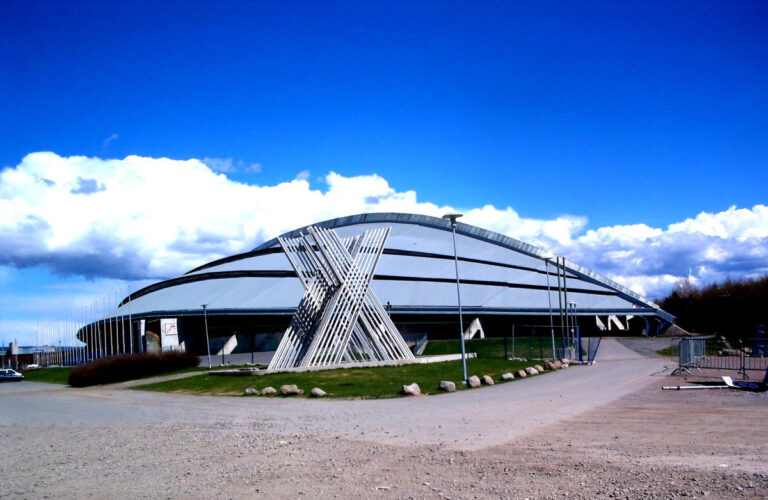
As usual, Norway dominated the Long Track competition, taking three gold and two silver out of the 30 medals on offer. Local hero Johann Olav Kloss won all three of the speed skating gold medals and managed to set a world record in each one!
Alpine and Nordic Skiing
With a total of 30 medals up for grabs in 10 different Alpine Skiing events, Norway ended up winning the most medals overall but only one gold, two silver and two bronze. Norway managed the only podium sweep of the entire tournament with gold, silver and bronze in the Men’s Combined.
Germany won three gold medals to top the table with the US in second on two gold medals. Overall, 10 out of the 46 nations who entered the Alpine Skiing competitions won medals. Vreni Schneider of Switzerland was the biggest individual winner, managing a complete set of gold, silver and bronze in Alpine Skiing disciplines.
In Biathlon – a combination of cross-country skiing and shooting – Russia dominated with three out of six gold medals and five out of 18 overall.
Cross-country skiing was led by Norway with three out of 10 gold medals and eight out of 30 overall. Italy, Russia, Kazakhstan and Finland won the rest of the medals out of the 35 nations to enter cross-country skiers.
Nordic combined was dominated by Norway, with gold and bronze medals in the individual and silver in the team. Japan picked up gold in the team and silver in the individual while Switzerland picked up the final bronze medal for team.
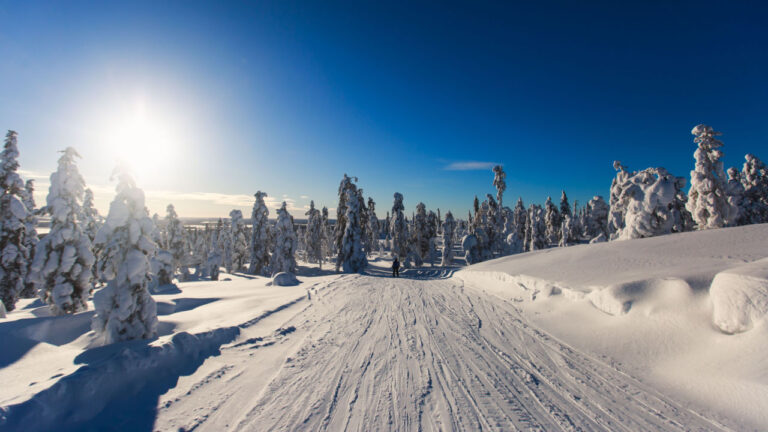
On the ski jump, Norway and Germany picked up three medals each but Germany topped the table with three gold, and one bronze to Norway’s single gold and two silver.
Closing ceremony
10 years after the 1984 games in Sarajevo, the eyes of the Olympic World turned once again to the city. The closing ceremony was dedicated to the Yugoslavian Civil War and the Siege of Sarajevo that were reaching their heights at this time.
After this tribute, the flag was handed over to the mayor of Nagano in Japan, which would host the 1998 games and their mascots, the Snowlets, were revealed for the first time. Thus, officially, the Lillehammer games drew to a close and all eyes turned to Japan.
The final medal table
Of the 67 countries to enter, almost one third – 22 countries in total – won medals.
Norway won the most medals with 26 and Russia won 23 but Russia topped the table by winning one more gold, giving them 11 to Norway’s 10.
Australia propped up the table with a single medal – bronze in the Men’s 5000m Short Track Speed Skating – the first Winter Olympic medal for the country.
Just ahead of them were Great Britain who also managed a bronze medal in speed skating, Men’s 500m, as well as the bronze won by Torvill and Dean in Figure Skating.
Legacy of the Lillehammer Winter Games
The legacy of the 1994 Olympic Winter Games can be felt in Lillehammer to this day. Moreso than any other similar town, there’s a sporting buzz that can be felt year-round.
Cycling is very prevalent and common, and in winter you will see people heading to the slopes for skiing and sledding every day.
Lillehammer is also home to an Olympic museum, that showcases both the history of the event as a whole as well as Norway’s role as hosts in 1952 and 1994 and, of course, their role as medal winners in every games!
Most people you talk to around the town remember hosting the games and a great many of them worked or volunteered to help make them a success.
There’s a great pride in the town about what was achieved and it’s amazing to see that, almost three decades after the games left town, there’s still a visible connection that endures.
What are your memories of the 1994 Olympic Winter Games in Lillehammer? Let us know in the comments below.


After over 33 years of visiting Norway previously, in 1994 we decided to go to the Winter Olympics (OL94), which was held in Lillehammer. Everything for this was booked through an agency in England, and we had no idea where we would be staying, except that it would be with a family in Lillehammer. This was to be the start of yet another new adventure for us, as we had only been told their name and that they would meet us at Lillehammer station from the train. Their names were Terje and Alma. Terje had just retired from being the headmaster of a local school, and Alma was an expert at handicrafts of many kinds. Both were extremely practical to say the least, and very friendly.
Having told Terje that I would be arriving at the train station wearing a yellow coloured anorak for easy recognition, we didn’t realise that half the world be arriving also wearing yellow coats! This caused some initial problems of recognition, but eventually when all the other ‘coats’ had gone we were the only ones left, and Terje came up to us and said “You must be Roger and Vera I presume?” With our bags bundled into the car he took us on a slippery drive up to his house near the Maihaugen museum where we were then welcomed by his wife Alma. Little did we know then that this would be the start of another great family friendship which would last for years to come. Sadly, they have both now died.
Terje was a volunteer for OL, and had jobs to do during the two weeks we were there, mainly to keep the bobsleigh run at Hunderfossen tidy of all rubbish, a job he did with others very well. Alma took us around the local Lillehammer area and showed us the best way to get to the Olympic Park by a footpath along from the top of the road above their house. This was quite a long walk, as was the walk into the town, both of which we traversed many times during the two weeks we were there, with the airship going around overhead most days. Both of them treated us far better than just the paying guests that we were, and in true Norwegian fashion welcomed us fully into their family structure. We met their daughter Birgitte and her husband Tore, who had a small farm in Øyer, so we had something in common with them, and of course they spoke good English which was a bonus to us. Birgitte and Tore were part of a country dancing display at Hafjell during the games, and we have a long video of this, plus other happenings during those two weeks.
The weather was beautiful whilst we were there with blue skies all of the time, but the air temperature was not usually any warmer than -20 to – 25°C. Although we thought we had come prepared for the cold, we had never experienced anything like this before, for such a long period. We found that because the bus transport was a bit overwhelmed in the early days, we had to wait in a bus queue for 4 hours before being able to get on board to go to Kvitfjell for the downhill, which had finished by the time we got there. To say we got a bit cold is an understatement! We attended both the opening and closing ceremonies, which were equally cold, plus other events in Hamar and Gjøvik, which were indoors and a bit warmer. Basically, we went to one event every other day, and on the ‘off’ days did something different.
For us, we thought that attending these games would be the pinnacle of our years visiting this wonderful country, and despite OL94 being described as ‘The best winter games ever!’, which it really was, little did we know what was still in store for us in the future. I still have most of the mementos from the Games period, including my white cape which was worn at the opening and closing ceremonies to resemble the fact that we were covered in snow, for television purposes, and a full set of the newspapers that were issued during the OL period.
We continued visiting the country for another 28 years, until the onset of covid, which unfortunately upset travel so much that it was difficult to get there and back https://www.youtube.com/watch?v=w0JJMyphDEo. However, in 2021 we managed to reach 60 years visiting the country, which shows that we must have really liked it. If I was young again, and know what I know now, I would move over there like a shot. Sadly, as we are now both over 80, I fear it is a bit too late. It’s my sort of place, so ‘takk for alt’, Norway! I now know why that is written on so many gravestones over there! The whole story of the 60 years can be seen on Youtube here https://www.youtube.com/watch?v=w0JJMyphDEo , if you haven’t seen it before!
Roger Stokes
My wife and I were on holiday in Puerto Vallarta, Mexico. In the hotel bar one evening, we met an American couple, and in conversation, I mentioned that I was working on rotation to Stavanger. The guy, who identified himself as Brian Savage, said wasn’t much enamored of Norway, because he lost a hockey match there, in Lillehammer. I knew nothing about hockey , so I let the comment go.
Only after our holiday did I check out about a hockey player with his name, to find out that he was a member of that Canadian team who were the losers in that final. Feeling sure that he was kidding me, I checked out his profile and picture in Wikipedia. It was him and what’s more he was loaded, one of the highest grossing players ever…! Should’ve tapped him for a few more beers…..